As the Chinese Super League's (CSL) Guangzhou Evergrande aims to build the world's largest professional football stadium, CGTN takes a view at several legendary stadiums across the globe that have hosted or will stage major sporting events such as the FIFA World Cup and Olympic Games.
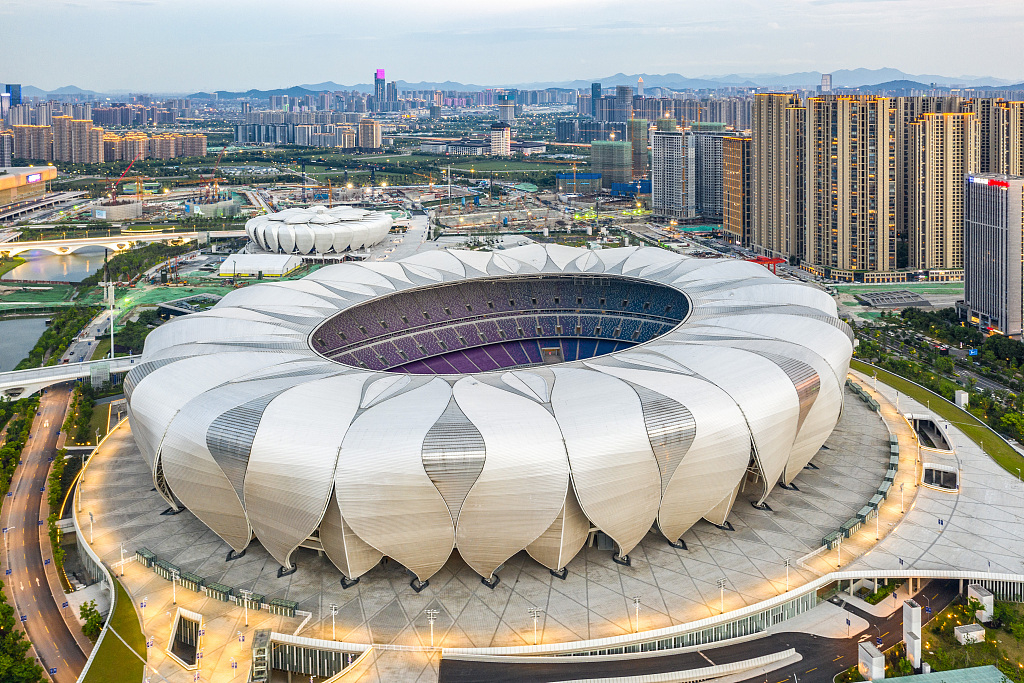
Photo taken on June 6, 2019 shows an aerial view of the Hangzhou Olympic Sports Center, in Hangzhou, east China's Zhejiang Province. /VCG
Photo taken on June 6, 2019 shows an aerial view of the Hangzhou Olympic Sports Center, in Hangzhou, east China's Zhejiang Province. /VCG
Hangzhou Olympic Sports Center
The new Evergrande stadium is not the first to have a lotus shape, as the Hangzhou Olympic Sports Center has a lotus petal-shaped structure with two circular stadiums that were competed in 2018.
The main stadium, built to Olympic-size proportions, has a seating capacity of 80,000 and will host the 2022 Asian Games.
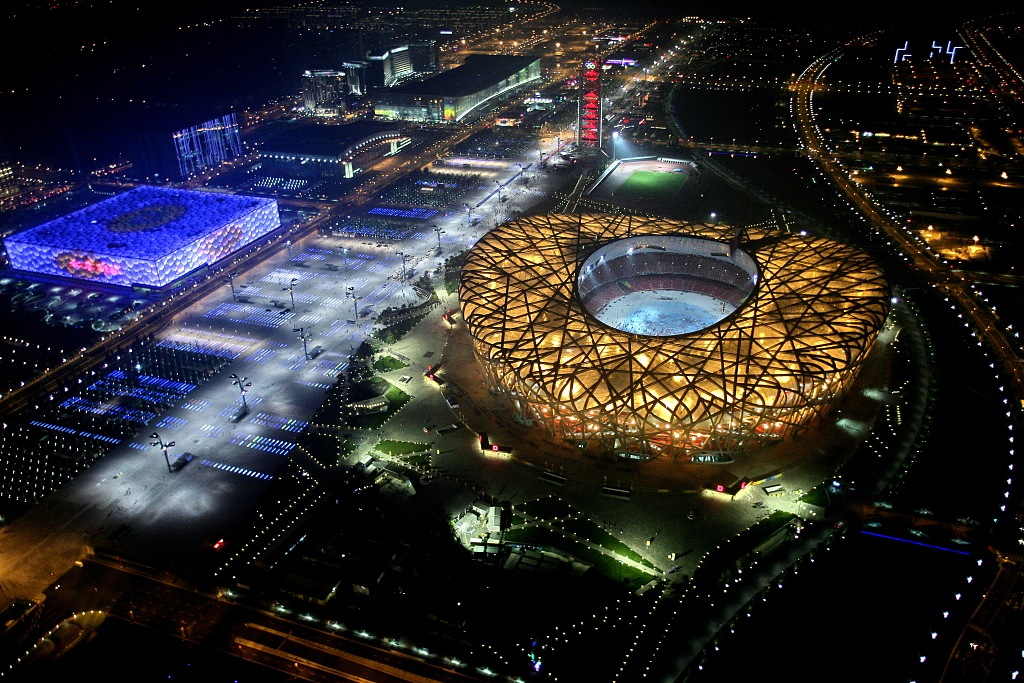
An aerial view of the Beijing National Stadium (R) at night besides the Beijing National Aquatics Center, or known as the Water Cube. /VCG
An aerial view of the Beijing National Stadium (R) at night besides the Beijing National Aquatics Center, or known as the Water Cube. /VCG
Beijing National Stadium
The Beijing National Stadium, also known as the Bird's Nest, is an iconic piece of sports architecture in the Chinese capital. It's also the world's largest steel structure and the most complex stadium ever constructed.
The interlocking steel structure was the main stadium of the Beijing 2008 Olympic Games and Paralympic Games, and will also host the opening and closing ceremonies for the Beijing 2022 Winter Olympic Games.
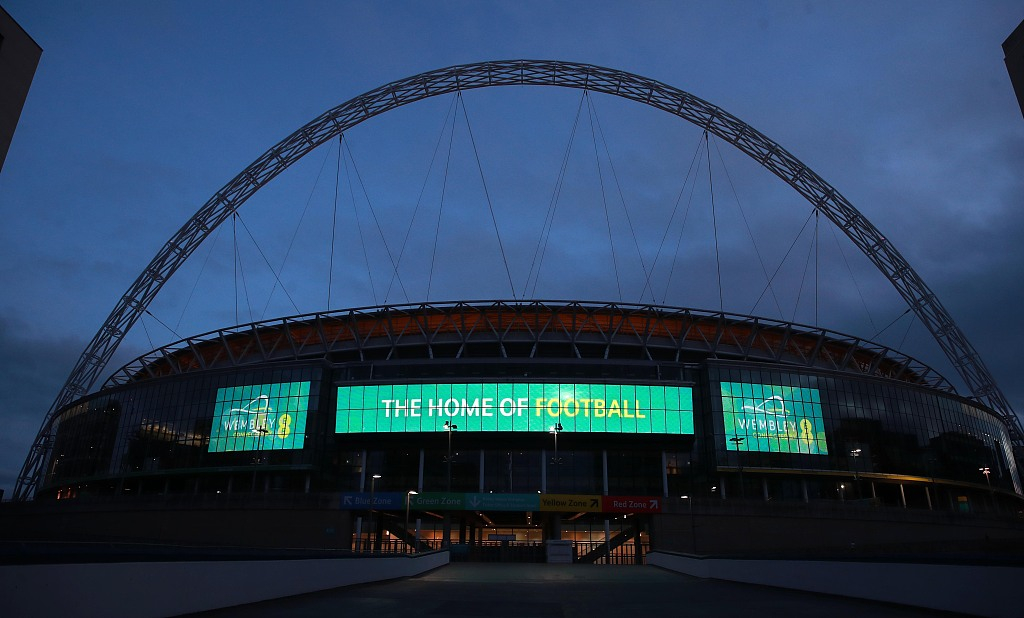
A front view of the Wembley Stadium at night when the screen shows "The Home of Football" in London, UK, March 17, 2020. /VCG
A front view of the Wembley Stadium at night when the screen shows "The Home of Football" in London, UK, March 17, 2020. /VCG
Wembley Stadium
Rebuilt in 2007, Wembley in London is the largest stadium in UK, with a total capacity of 90,000 seats. The stadium is home to the England national team, as well as the FA Cup final and the Football League Cup final.
It also staged the London 1948 Olympic Games and 1966 FIFA World Cup final.
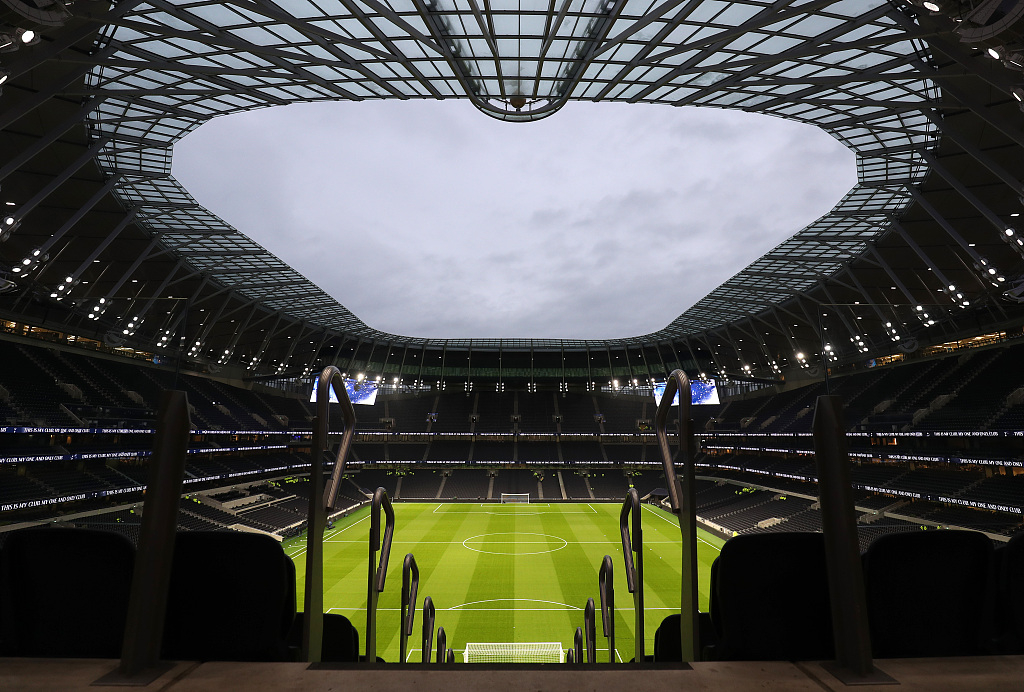
A general view inside the Tottenham Hotspur Stadium in London, UK, December 26, 2019. /VCG
A general view inside the Tottenham Hotspur Stadium in London, UK, December 26, 2019. /VCG
Tottenham Hotspur Stadium
Another famous stadium in London is the Tottenham Hotspur Stadium, which opened in April 2019 after the team relocated from White Hart Lane.
It has a capacity of 62,000 and cost a reported 850 million British pounds (1.1 billion U.S. dollars). It also includes a retractable American Football field which is used for the increasingly popular NFL London series.
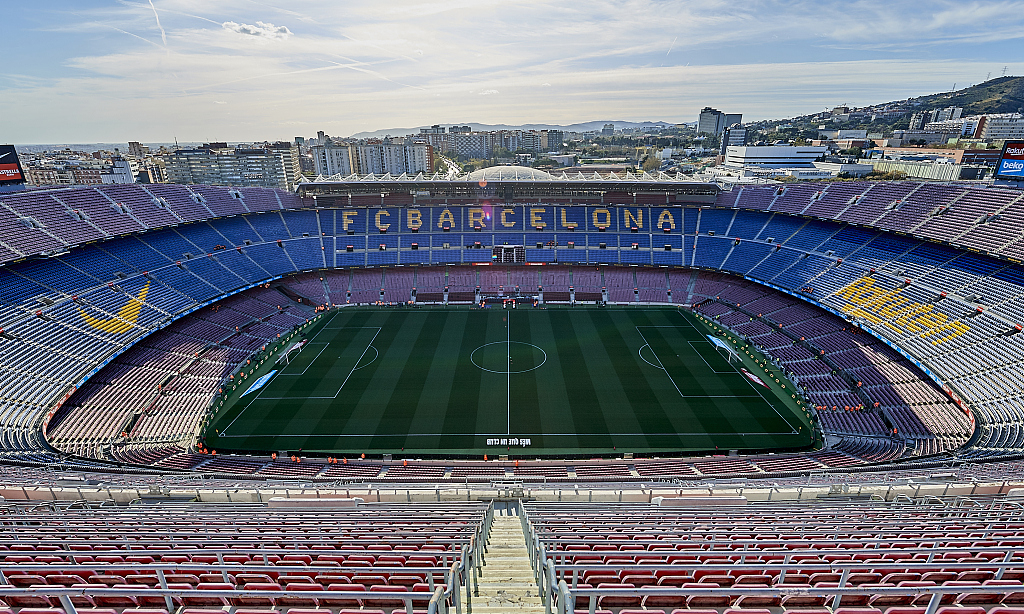
A general view inside the Camp Nou stadium, home to FC Barcelona in Barcelona, Spain, March 7, 2020. /VCG
A general view inside the Camp Nou stadium, home to FC Barcelona in Barcelona, Spain, March 7, 2020. /VCG
Camp Nou
The biggest stadium in Europe is the Camp Nou – "the new ground" in English - with a capacity of 99,354. It has been home to FC Barcelona since it was officially opened on September 24, 1957 and its name references FC Barcelona's old home of Les Corts.
When the stadium was used in the FIFA World Cup in 1982, the capacity was increased to 120,000 but the total seating number has varied over the years.
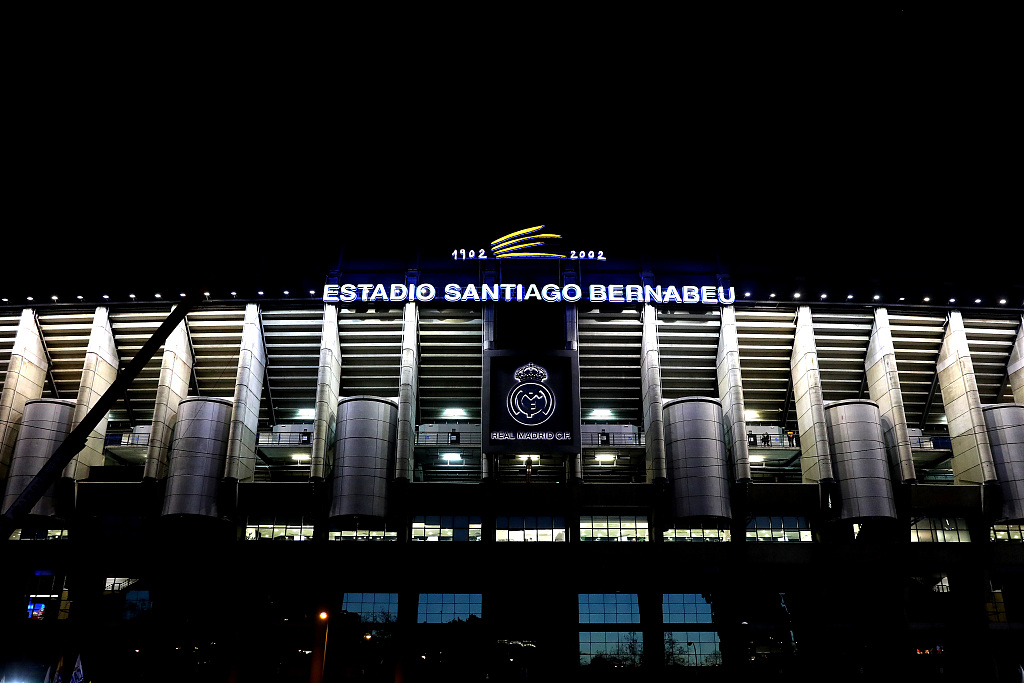
A night view outside the Estadio Santiago Bernabeu stadium, home to Real Madrid in Madrid, Spain, March 2, 2019. /VCG
A night view outside the Estadio Santiago Bernabeu stadium, home to Real Madrid in Madrid, Spain, March 2, 2019. /VCG
Estadio Santiago Bernabeu
With a current seating capacity of 81,044, the Estadio Santiago Bernabeu stadium is the second largest stadium in Spain after Camp Nou, and home to Real Madrid since its completion in 1947.
The stadium is named after Santiago Bernabeu, a former forward and later president of Real Madrid, who dedicated his life to transforming the club into one of the world's football giants.
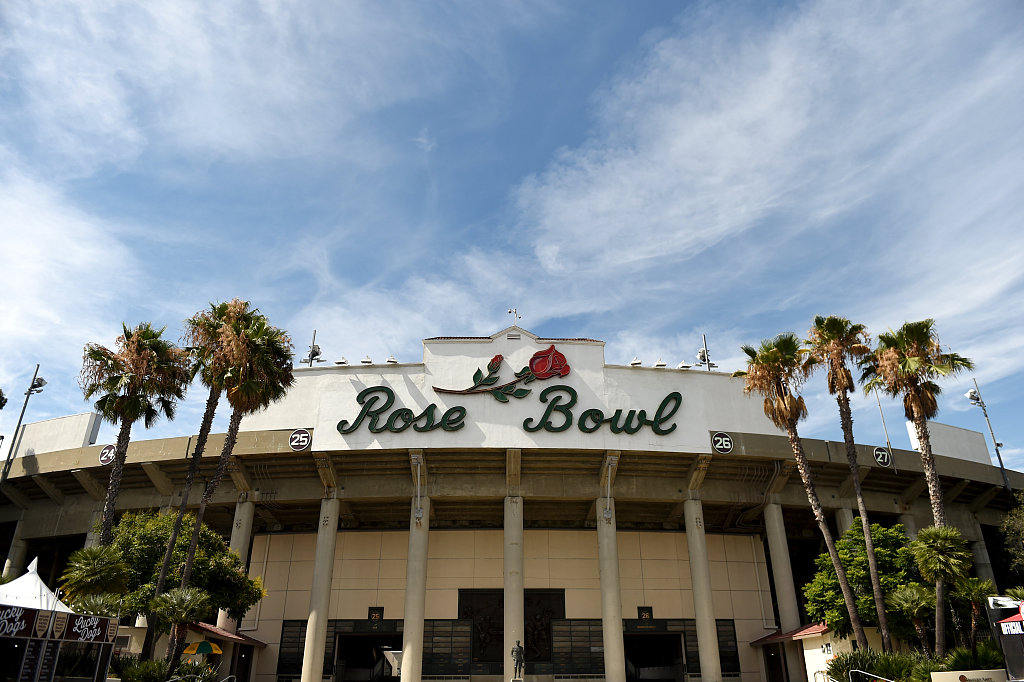
A view of the front site of the Rose Bowl stadium in Pasadena, California, U.S, August 3, 2019. /VCG
A view of the front site of the Rose Bowl stadium in Pasadena, California, U.S, August 3, 2019. /VCG
The Rose Bowl
One of the historic architectures in the U.S. is the Rose Bowl stadium which opened in 1922 and it has a modern capacity of 92,542. The stadium in Pasadena, California has hosted five Super Bowls, two Summer Olympic Games' matches, two FIFA World Cup finals and numerous cultural events, for example, concerts.
The stadium is best known for hosting the annual college football Rose Bowl, one of the most important events during the Bowl Championship Series (BCS). The BCS is comprised of four regular bowl games and the American National Championship Game. Besides Rose Bowl, other Bowl games are the Sugar Bowl in New Orleans, the Orange Bowl in Miami, Florida and the Fiesta Bowl in Glendale, Arizona.
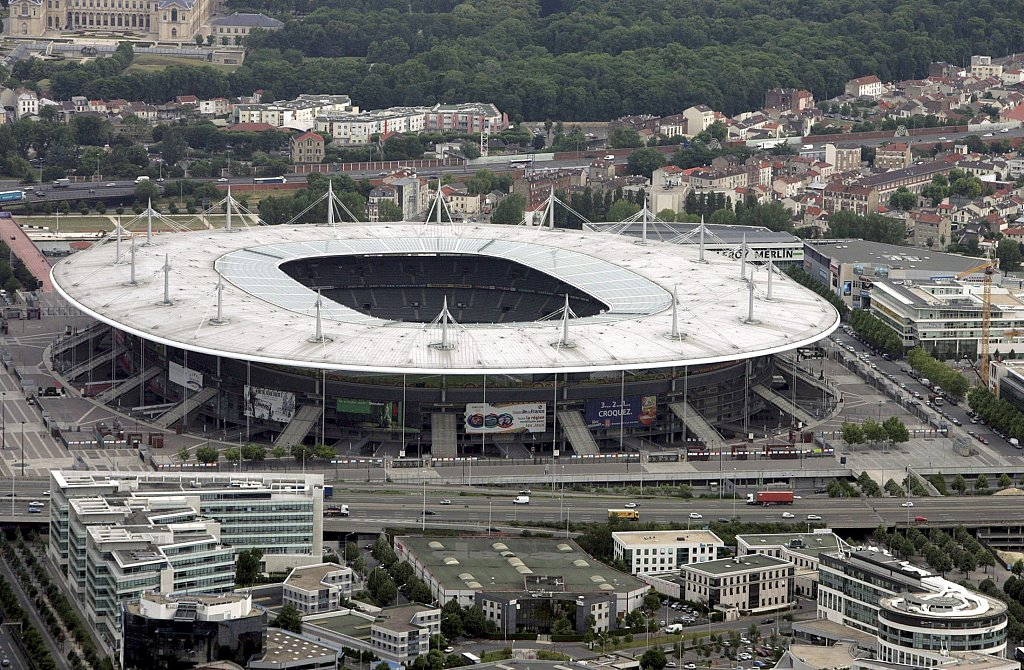
An aerial view shows the Stade de France stadium in Saint-Denis, France, July 14, 2005. /VCG
An aerial view shows the Stade de France stadium in Saint-Denis, France, July 14, 2005. /VCG
Stade de France
The legendary Stade de France in Saint-Denis, an area just north of Paris, is the biggest sport and concert center in the country with a capacity of 80,000 seats. It was built to host the 1998 FIFA World Cup, which was won by the home nation.
It has been the epicenter of most major national and international cultural and sporting events held in France over the last two decades. Moreover, it will host the opening and closing ceremonies and the athletics events at the Paris 2024 Olympic and Paralympic Games.
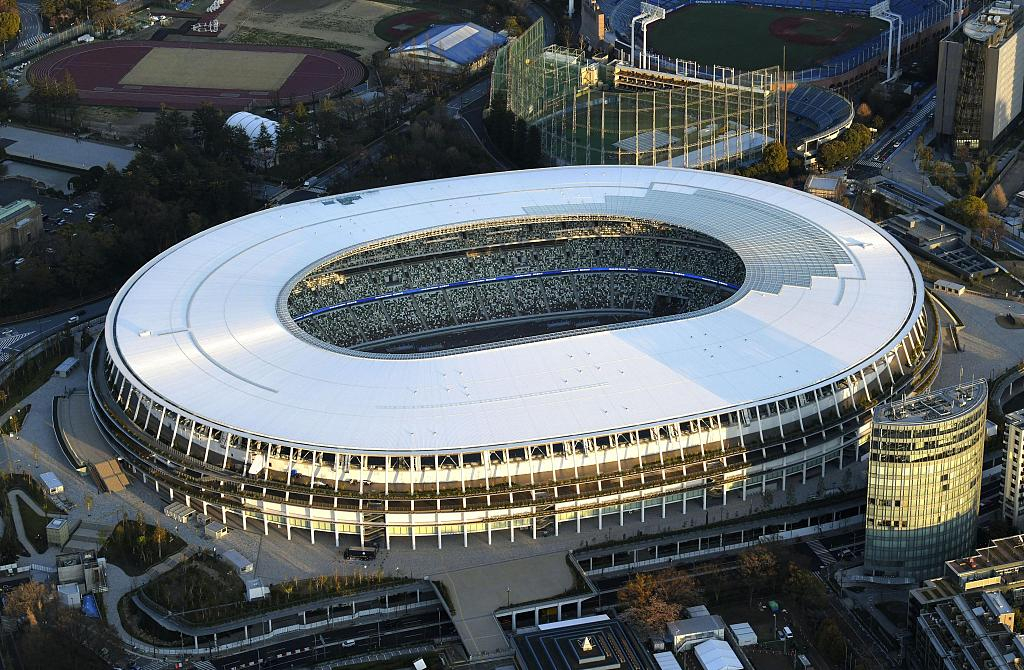
Photo taken from a Kyodo News helicopter on March 24, 2020 shows the new Japan National Stadium in Tokyo. /VCG
Photo taken from a Kyodo News helicopter on March 24, 2020 shows the new Japan National Stadium in Tokyo. /VCG
Japan National Stadium
The Japan National Stadium will be the main stadium for the opening and closing ceremonies at the Tokyo 2020 Olympic Games, which have been postponed to July 23-August 8 in 2021 due to the COVID-19 pandemic.
The stadium's designer is renowned Japanese architect Kengo Kuma who has a strong emphasis on environmental protection. He has stressed the use of wood and the number "47" in the design many times as the height of the building is 47.4 meters and 47,000 trees have been planted around the venue. In addition, wood used in the construction was sourced from the 47 prefectures of Japan.